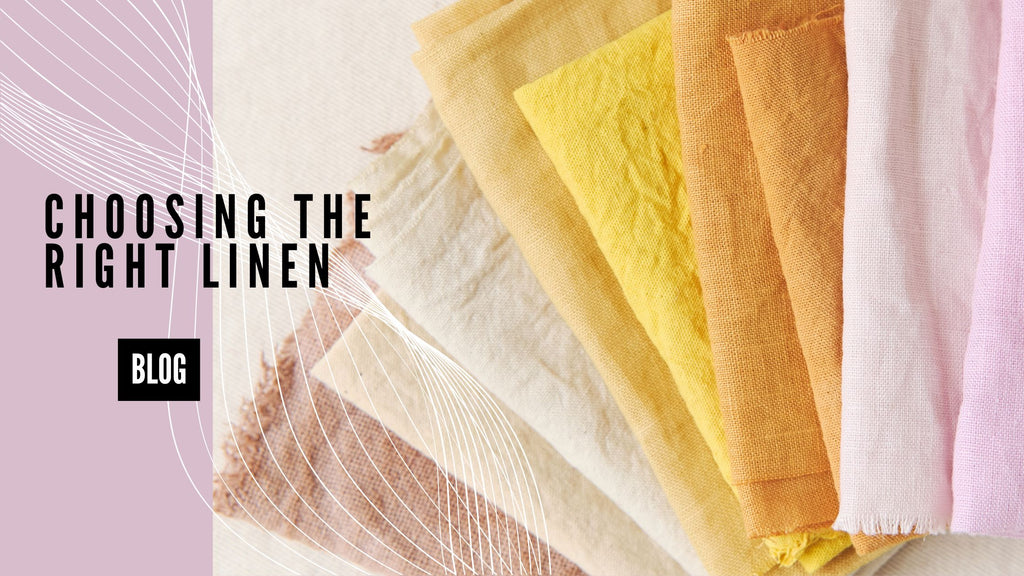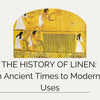The Ultimate Guide to Choosing the Right Linen Fabric for Your Sewing Projects

Starting a new sewing project is akin to tapping into a world of limitless possibilities where creativity has no limits. The fabric is at the centre of every masterpiece, serving as the foundation for turning fantasies into reality. Linen is a timeless classic among the many alternatives, cherished for its natural elegance and versatility.
But in a pool of endless options for linen, how do you know which is the best for your project? What characteristics should you look out for, and which ones should you avoid? We're your guiding light on your expedition to find the suitable linen. This ultimate guide looks into the world of linen, its secrets, and how to find the perfect choice for your sewing project.
Types of linen fabrics and their properties
If you're a home sewer, you already know everything there is to know about linen. For beginners, it's a strong and versatile fabric made from flax plant fibres. Even though it looks a little similar to cotton, it produces highly absorbent garments perfect for humid climates. It dries fast and retains less heat during warm weather.
When it comes to choosing linen for your project, you want to begin by knowing the types. There are four primary types, each produced through a different weaving technique:
Damask Linen
You can identify damask linen through its reversible pattern, which mostly features elaborate designs. It has a silky texture and a rich appearance. Damask linen isn't an everyday sewing fabric; rather, it is often used for decorative items such as napkins, tablecloths, and decorative handkerchiefs.
Plain-woven Linen
Plain-woven linen is light, breathable, and comes with a crisp texture. Due to its absorbent nature, it's a common fabric for garment making, crafting hand towels, cotton towels, dish towels, and lightweight curtains.
Loosely-Woven Linen
This type of fabric has a natural rustic appeal and ranges between light and medium weight. Its loosely packed and airy weaves make it more breathable and light. It has a somewhat see-through appearance when held against the light. Loosely woven linen is a common fabric for sanitary napkins and reusable diapers.
How to choose the right linen fabric for your sewing project
With the different types of fabric available on the market, choosing the right one can be daunting. Besides considering the type, you need to look at other factors, such as the linen weight and your project type, among others. Let's knit right into it!
Fabric Weight
What's the end product of your project? Are you weaving a fine garment? The intended use of your finished product helps you determine the weight of the linen. If sewing an airy summer clothing, you should consider lightweight linen. If you're making durable upholstery, outerwear, or bags, heavyweight linen makes an excellent choice.
Also, it'll be easier to drape a lighter linen than a heavy one. Other factors that affect the weight include the processes that the final product has to undergo, such as washing to reduce shrinkage.
Now, how do you differentiate light from heavy linen? Linen weight measurement is done in grams per square meter (GSM). When buying linen, it should be visible on the product listing.
- Heavyweight linen has a weight ranging between 250 and 500 grams per square meter.
- Mediumweight linen ranges between 160 and 250 grams per square meter.
- Lightweight linen ranges between 110–160 grams per square meter.
Blend with other fabric
Linen is often blended with other fabrics, like cotton, to bring the perks of the two materials into one. The blend of linen you go for will depend on what you're trying to create. Linen cotton blend is an excellent choice for a garment with a loosely packed fabric structure. Cotton helps soften the fabric while still retaining the crisp look of linen.
Weave Pattern
There are different weave patterns to choose from including basket, twill, and plain weave. The weave structure that is employed determines the texture, drape, and durability. Choose a weave structure that complements the design and functionality of your project.
Other than these three main considerations, you might want to narrow down to other factors like the care requirements of the final product. Some linens need special care, such as dry cleaning or handwashing. Others are machine-washable, making them easier to maintain.
Final thoughts on choosing the right linen
When sewing with linen, choosing the right one ensures the finished product surpasses your expectations as far as aesthetics, comfort, and functionality are concerned. Feel free to dig deeper into other considerations when choosing linen to meet your project needs.






